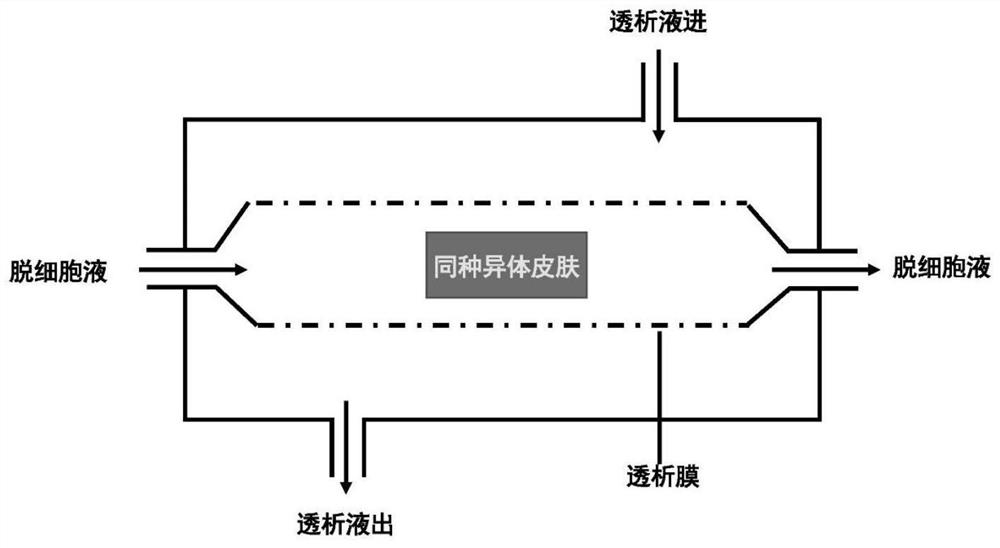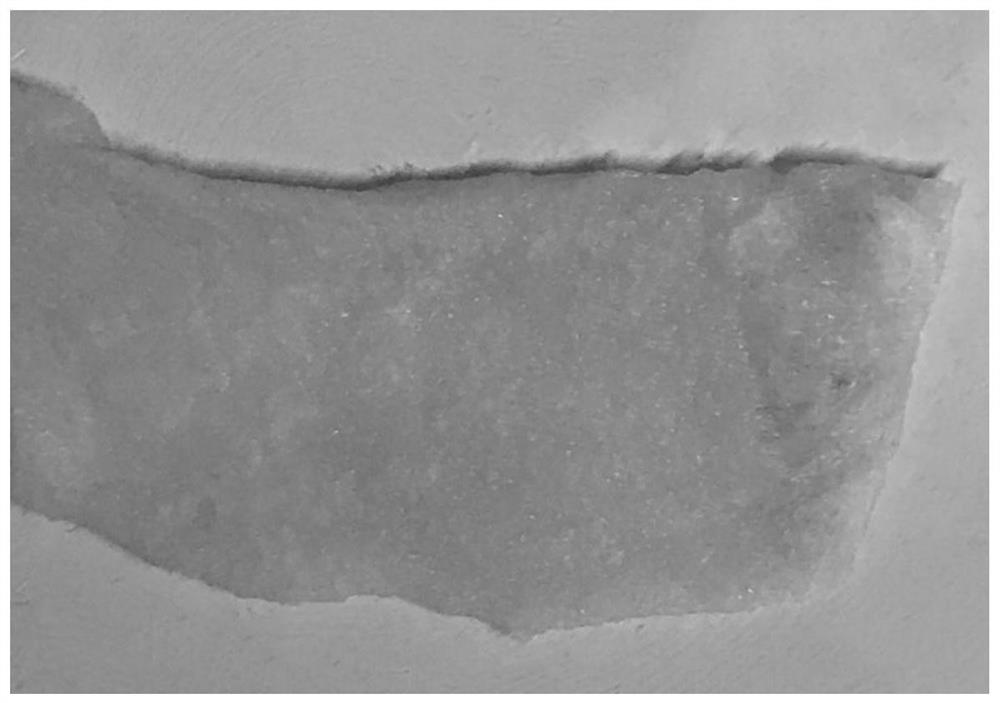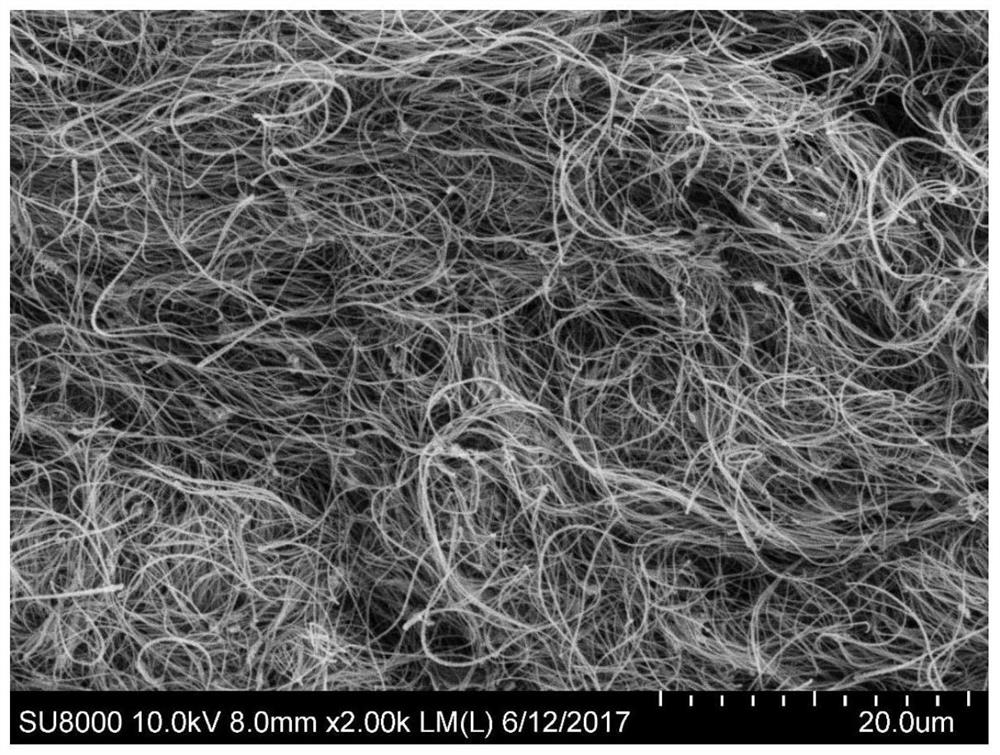A kind of hydrogel based on acellular dermal matrix and its preparation method
A decellularized dermis and hydrogel technology, applied in medical science, prostheses, etc., can solve problems affecting clinical use, increasing costs, environmental pollution, etc., to help support the growth of cells, reduce preparation costs, and reduce genetics toxic effect
- Summary
- Abstract
- Description
- Claims
- Application Information
AI Technical Summary
Problems solved by technology
Method used
Image
Examples
Embodiment 1
[0046] A preparation method of human-derived acellular dermal matrix, the specific steps are as follows:
[0047] (1) Preparation of acellular dermal matrix:
[0048] ①Take the stored human skin and remove the subcutaneous fatty components;
[0049] ②Step ①Clean and disinfect the skin with subcutaneous fatty components with povidone iodine and alcohol, and then soak and clean the skin repeatedly with hypotonic solution;
[0050] ③ Treat the skin washed in step ② with 2.5 mg / ml Dispase II solution overnight; discard the Dispase II solution, remove the epidermis, and then wash with normal saline to obtain the dermis;
[0051] ④Use the dermis obtained in step ③ with 2mol / L Ca 2+ NaCl solution for 18h, Ca 2+ The final concentration is 5mM / L; After discarding the sodium chloride solution, wash with normal saline;
[0052] ⑤ Place the dermis cleaned in step ④ into the prepared "decellularized solution", which contains the following components: 0.1%-0.5wt% trypsin, 0.5-5mM EDTA, ...
Embodiment 2
[0056] Internal structure of acellular dermal matrix
[0057] (1) Cut the acellular dermal matrix obtained above into a size of 1 cm × 1 cm, and paste it on a metal tray; the section of the acellular dermal matrix is quenched with liquid nitrogen to make it hard and brittle, and then broken; the section faces Paste on the metal tray.
[0058] (2) After spraying gold in the sample preparation room of the electron microscope, it was put on the machine, observed and photographed by the scanning electron microscope, and the results were as follows: image 3 shown.
[0059] The results showed that there were no cell residues in the tissue, and the collagen structure was complete, similar to normal skin.
Embodiment 3
[0060] Example 3 HE staining of acellular dermal matrix
[0061] (1) Fix the normal skin tissue and the acellular dermal matrix in 4% paraformaldehyde fixative solution for 24 hours respectively;
[0062] (2) Alcohol dehydration, xylene transparency;
[0063] (3) Dip in wax for 30 minutes, embed, and make sagittal paraffin sections with a thickness of 5 μm;
[0064] (4) Gradient alcohol carries out dewaxing, dehydration, HE staining;
[0065] (5) Transparent, sealed, observed under a light microscope, the results of HE staining of normal skin tissue are as follows: Figure 4 As shown, the results of HE staining of acellular dermal matrix are as follows Figure 5 shown.
[0066] The results showed that there were no cell residues in the skin tissue.
PUM
 Login to View More
Login to View More Abstract
Description
Claims
Application Information
 Login to View More
Login to View More - R&D
- Intellectual Property
- Life Sciences
- Materials
- Tech Scout
- Unparalleled Data Quality
- Higher Quality Content
- 60% Fewer Hallucinations
Browse by: Latest US Patents, China's latest patents, Technical Efficacy Thesaurus, Application Domain, Technology Topic, Popular Technical Reports.
© 2025 PatSnap. All rights reserved.Legal|Privacy policy|Modern Slavery Act Transparency Statement|Sitemap|About US| Contact US: help@patsnap.com



